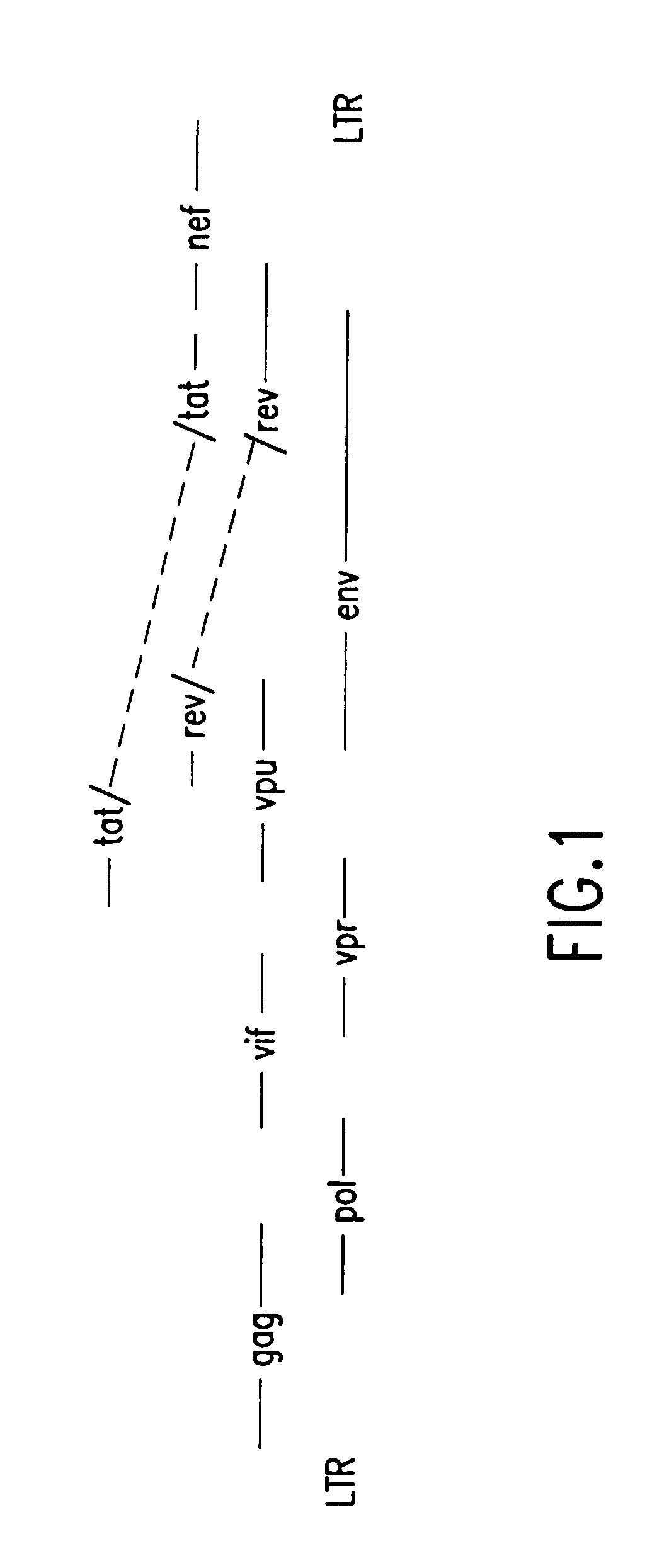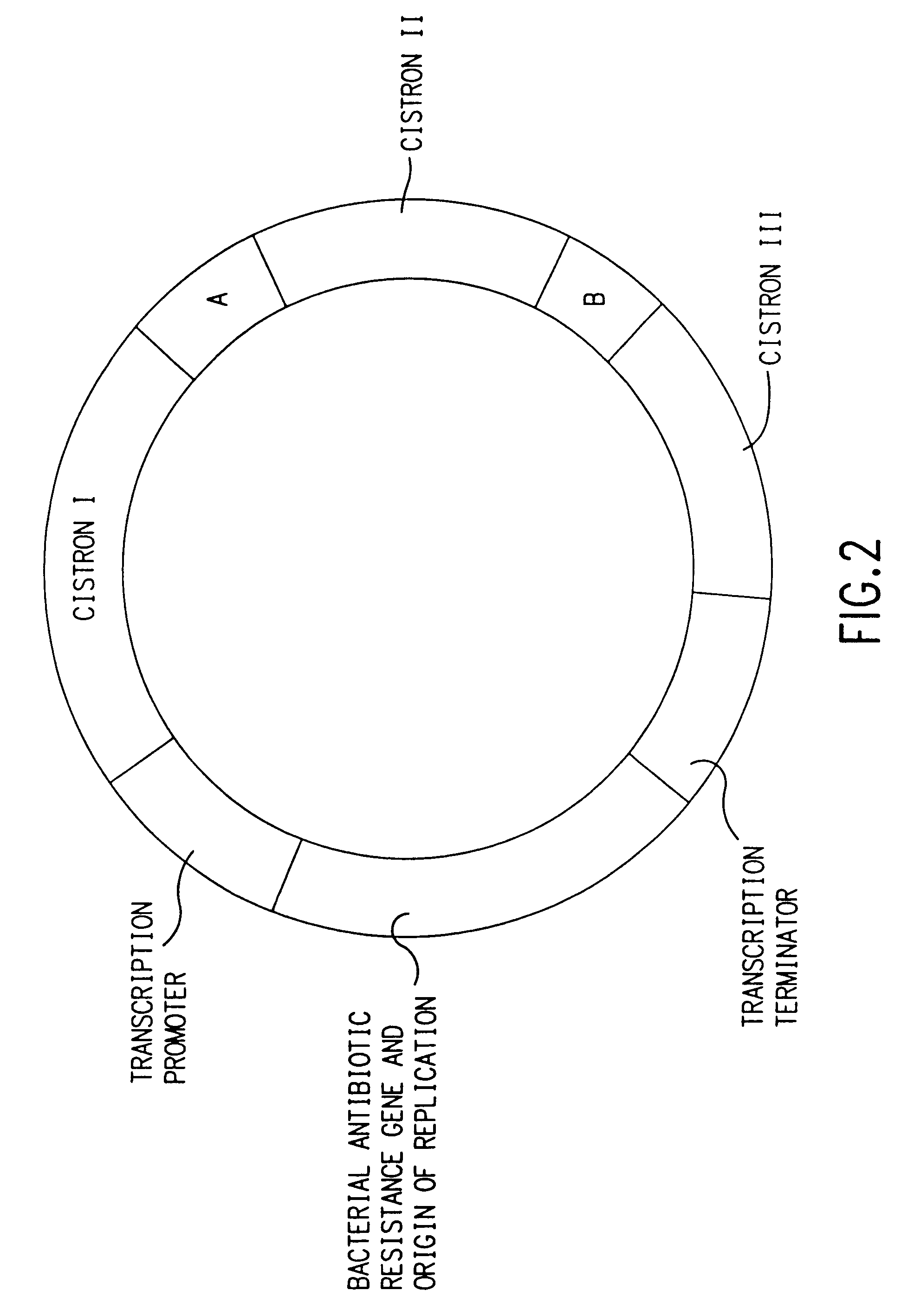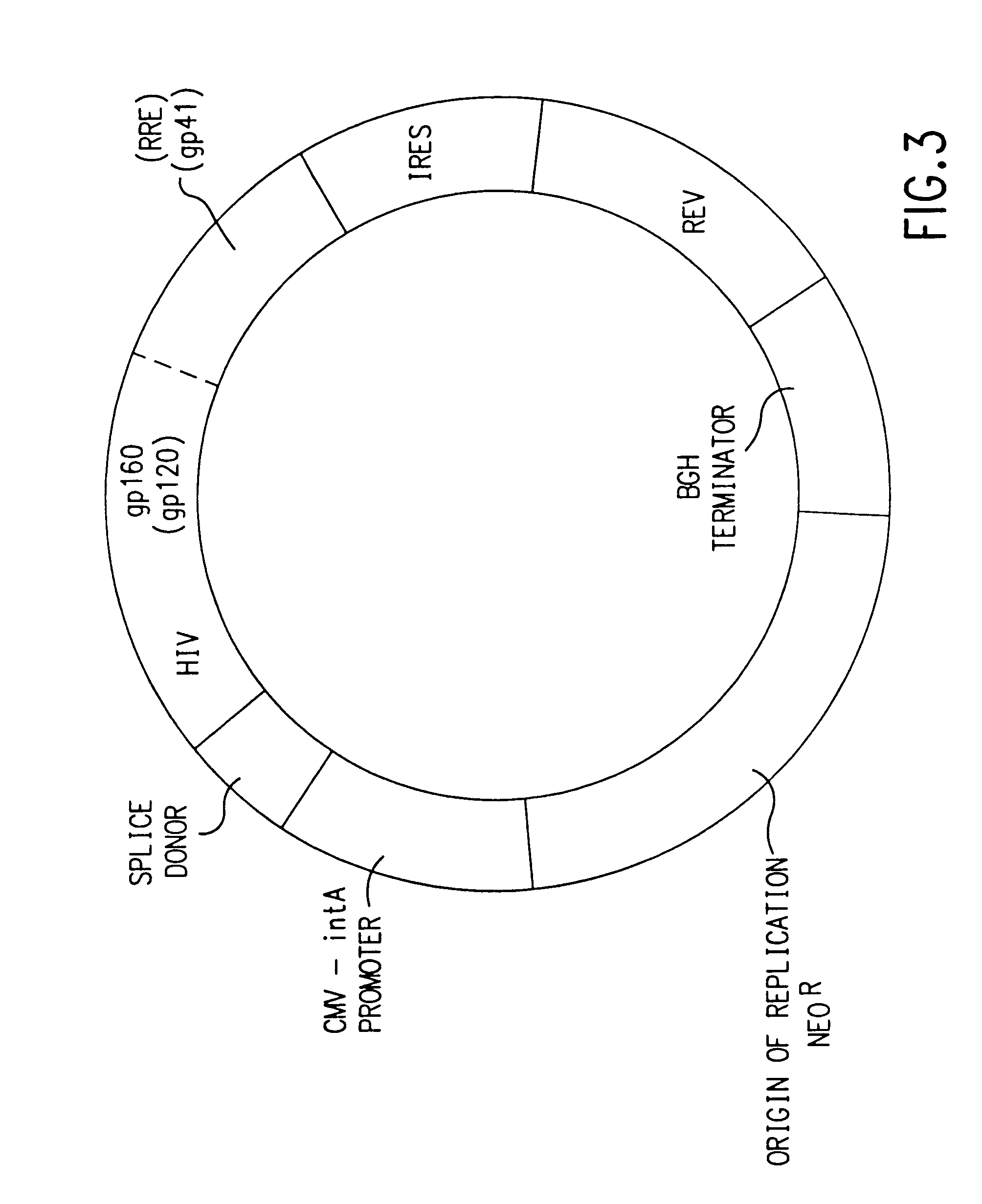Coordinate in vivo gene expression
a gene expression and coordinate technology, applied in the field of coordinate in vivo gene expression, can solve the problems that exogenous proteins entering the endosomal processing pathway (, mhc class ii molecules) are not usually effective in generating cd8sup>+, ctl responses
- Summary
- Abstract
- Description
- Claims
- Application Information
AI Technical Summary
Benefits of technology
Problems solved by technology
Method used
Image
Examples
example 1
Vectors for Vaccine Production
[0139]A) V1: The expression vector V1 was constructed from pCMVIE-AKI-DHFR [Y. Whang et al., J. Virol. 61, 1796 (1987)]. The AKI and DHFR genes were removed by cutting the vector with EcoR I and self-ligating. This vector does not contain intron A in the CMV promoter, so it was added as a PCR fragment that had a deleted internal Sac I site [at 1855 as numbered in B. S. Chapman et al., Nuc. Acids Res. 19, 3979 (1991)]. The template used for the PCR reactions was pCMVintA-Lux, made by ligating the Hind III and Nhe I fragment from pCMV6a120 [see B. S. Chapman et al., ibid.,] which includes hCMV-IE1 enhancer / promoter and intron A, into the Hind III and Xba I sites of pBL3 to generate pCMVIntBL. The 1881 base pair luciferase gene fragment (Hind III-Sma I Klenow filled-in) from RSV-Lux [J. R. de Wet et al., Mol. Cell Biol. 7, 725, 1987] was cloned into the Sal I site of pCMVIntBL, which was Klenow filled-in and phosphatase treated.
The primers that spanned int...
example 2
gp120 Vaccines:
[0157]Expression of the REV-dependent env gene as gp120 was conducted as follows: gp120 was PCR-cloned from the MN strain of HIV with either the native leader peptide sequence (V1Jns-gp120), or as a fusion with the tissue-plasminogen activator (tPA) leader peptide replacing the native leader peptide (V1Jns-tPA-gp120). tPA-gp120 expression has been shown to be REV-independent [B. S. Chapman et al., Nuc. Acids Res. 19, 3979 (1991); it should be noted that other leader sequences would provide a similar function in rendering the gp120 gene REV independent]. This was accomplished by preparing the following gp120 constructs utilizing the above described vectors:
I. gp120 Vaccine Constructs:
[0158]A) V1Jns-tPA-HIVMN gp120: HIVMN gp120 gene (Medimmune) was PCR amplified using oligomers designed to remove the first 30 amino acids of the peptide leader sequence and to facilitate cloning into V1Jns-tPA creating a chimeric protein consisting of the tPA leader peptide followed by th...
example 3
gp 160 VACCINES
[0167]In addition to secreted gp120 constructs, we have prepared expression constructs for full-length, membrane-bound gp160. The rationales for a gp160 construct, in addition to gp120, are (1) more epitopes are available both for both CTL stimulation as well as neutralizing antibody production including gp41, against which a potent HIV neutralizing monoclonal antibody (2F5, see above) is directed; (2) a more native protein structure may be obtained relative to virus-produced gp160; and, (3) the success of membrane-bound influenza HA constructs for immunogenicity [Ulmer et al., Science 259:1745–1749, 1993; Montgomery, D., et al., DNA and Cell Biol., 12:777–783, 1993].
[0168]gp160 retains substantial REV dependence even with a heterologous leader peptide sequence. Therefore, two strategies independent from that employed for gp120 expression were developed for preparing a gp160 expression vector: (1) subcloning into V1Jns a genomic HIV DNA fragment reported to be effecti...
PUM
| Property | Measurement | Unit |
|---|---|---|
| time | aaaaa | aaaaa |
| time | aaaaa | aaaaa |
| concentration | aaaaa | aaaaa |
Abstract
Description
Claims
Application Information
 Login to View More
Login to View More - R&D
- Intellectual Property
- Life Sciences
- Materials
- Tech Scout
- Unparalleled Data Quality
- Higher Quality Content
- 60% Fewer Hallucinations
Browse by: Latest US Patents, China's latest patents, Technical Efficacy Thesaurus, Application Domain, Technology Topic, Popular Technical Reports.
© 2025 PatSnap. All rights reserved.Legal|Privacy policy|Modern Slavery Act Transparency Statement|Sitemap|About US| Contact US: help@patsnap.com



